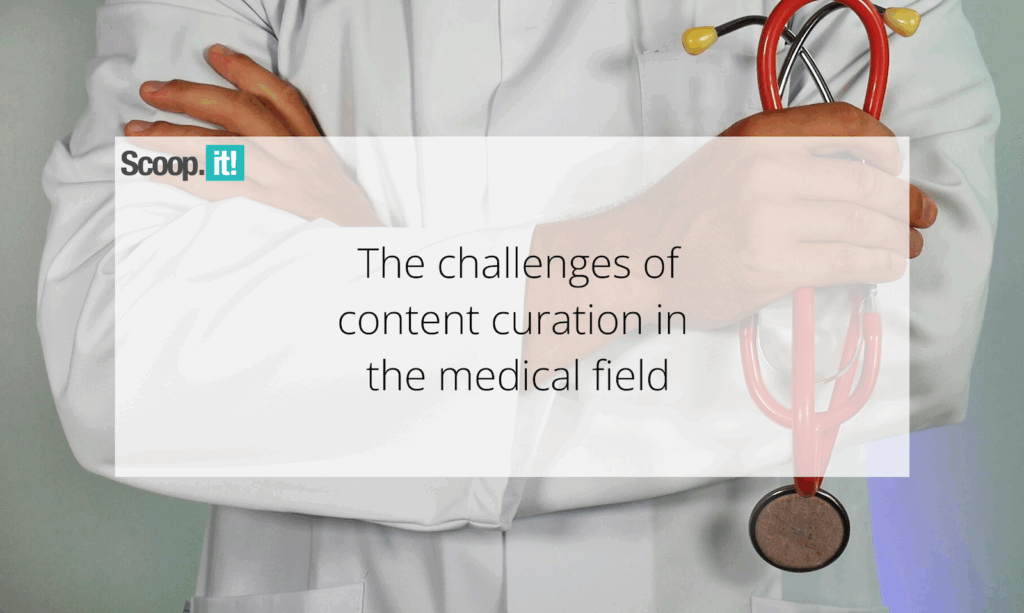
By 2025, the sheer volume of medical information has reached an unprecedented scale. Every day, thousands of research papers, clinical guidelines, and institutional reports are published worldwide. For healthcare professionals, it is no longer feasible to keep up with this torrent of data without systematic mediation. In this context, content curation has become a crucial process—not simply selecting articles, but filtering, evaluating, contextualizing, and disseminating knowledge in ways that are both reliable and practical.
The main challenges of content curation in medicine can be grouped into four categories: scientific reliability, accessibility, ethics, and innovation.
1. Scientific Reliability and Source Quality
a) Combating Medical Misinformation
The viral spread of inaccurate health information threatens public trust. Academic hospitals are now creating digital monitoring teams that combine clinicians, researchers, and communication specialists. For instance, when rumors about severe side effects of a new vaccine emerge online, these teams can respond rapidly with scientifically validated content, disseminated through patient-friendly channels to counteract misinformation.
b) Assessing the Validity of Research
Not all studies carry the same weight, and critical appraisal is essential. Continuing medical education platforms are experimenting with scoring systems based on Evidence-Based Medicine hierarchies. For example, when an oncologist reviews a weekly research digest, the platform highlights whether a paper is a randomized multicenter trial, a systematic review, or merely an observational case study—helping clinicians evaluate the strength of evidence before integrating it into practice.
c) Ensuring Continuous Updates
Clinical recommendations change quickly, and outdated practices can persist if updates are not systematically integrated. A cardiology department, for instance, now circulates a monthly internal review summarizing the latest European Society of Cardiology guidelines. This curated digest enables practitioners to revise treatment protocols in near real-time, without waiting for annual conferences.
2. Accessibility and Knowledge Sharing
a) Making Information Understandable for Patients
If knowledge remains too technical, it is inaccessible to those who need it most. Diabetes clinics, for example, are now transforming WHO guidelines into infographics and short educational videos. Instead of overwhelming patients with dense documents, they provide clear visuals explaining blood glucose targets and dietary recommendations—scientifically accurate, yet patient-friendly.
b) Supporting Time-Constrained Healthcare Professionals
Physicians often lack time to sift through vast amounts of literature. Professional societies are addressing this with mobile apps that push out weekly summaries of the top five oncology papers. These summaries include concise abstracts with expert commentary, allowing hospital oncologists to stay current in just a few minutes of reading, rather than several hours.
c) Building Interprofessional Bridges
Quality care depends on collaboration across professions. A digital journal initiative, for example, curates joint summaries from pharmacology research and nursing studies. This enables pharmacists to see how evolving drug protocols affect nursing practice, while nurses gain insight into prescribing trends—strengthening a shared foundation for interdisciplinary dialogue.
3. Ethics and Responsibility
a) Protecting Patient Data
Any use of clinical cases for teaching or content curation must strictly comply with data protection regulations. At one European hospital, an internal charter mandates anonymization of all sensitive data before publication. When a rare case is presented in a medical training module, identifiable details are systematically removed or altered, ensuring compliance with GDPR and safeguarding patient privacy.
b) Maintaining Neutrality in Recommendations
Medical curation must remain independent from commercial influence. Some therapeutic databases now flag conflicts of interest alongside clinical guidelines. For instance, when a cardiologist accesses a treatment recommendation, the system clearly indicates whether the contributing experts have financial ties to pharmaceutical companies—allowing practitioners to interpret the guidance with full transparency.
c) Guaranteeing Source Transparency
Traceability is fundamental for credibility. On certain university hospital platforms, every curated summary includes a DOI or QR code linking back to the original publication. When a physician reads a digest about a new monoclonal antibody, they can instantly access the full article in The Lancet or NEJM, minimizing the risk of misinterpretation or decontextualization.
4. Innovation and Technological Tools
a) Leveraging Artificial Intelligence for Filtering
Machine learning algorithms now make it possible to handle massive volumes of publications in real time. At a leading research hospital, an AI engine scans thousands of articles daily and automatically prioritizes studies on immunotherapy. It ranks them by clinical relevance and level of evidence, so researchers start each day with a curated, high-value reading list instead of manually sorting through dozens of journals.
b) Interactive and Immersive Formats
Knowledge transmission no longer relies solely on written articles. A medical university has introduced live interactive podcasts, where clinicians can ask experts questions in real time. This not only broadens access to cutting-edge research but also fosters dynamic exchanges between researchers and practitioners in a more engaging learning environment.
c) Personalized Curation
The increasing specialization of medicine demands tailored content streams. E-learning platforms now personalize their recommendations according to a user’s specialty and career stage. A surgical resident receives technical papers aligned with their training, while a senior professor in internal medicine is offered broader, cross-disciplinary analyses—ensuring that curated content remains directly relevant to professional needs.
Conclusion
In 2025, content curation in medicine has evolved into a strategic, scientific, and ethical competency. It ensures rigorous filtering of evidence, accessible knowledge sharing, ethical safeguards, and innovative dissemination methods. Concrete practices—from AI-powered immunotherapy digests to simplified diabetes guidelines for patients—illustrate how curation now underpins both medical education and clinical care.
Ultimately, the quality of modern healthcare depends not only on producing new knowledge but on the ability to curate, contextualize, and transparently disseminate it. Content curation has become an indispensable bridge between research, practice, and patient empowerment.


 (3 votes, average: 4.33 out of 5)
(3 votes, average: 4.33 out of 5)